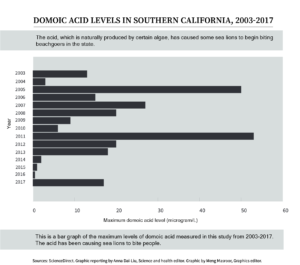This post was updated Jan. 30 at 10:04 p.m.
The 2023 U-Haul Growth Index indicated that California is facing the greatest out-migration of any state for the fourth consecutive year.
The U-Haul Growth Index measures changes in state populations by correlating population decline to an increase in U-Haul’s transactions of moving equipment in one direction. Although this index alone cannot capture the full extent of population changes, it reflects the fact that California has faced negative domestic migration for nearly 20 years.
According to the Public Policy Institute of California, the state experienced a decline in overall population for the first time in 2021. The institute also reported that California is increasingly losing residents to nearby states, such as Arizona, Nevada and Texas.
Affordability challenges are one of the main factors contributing to California’s net migration loss, said Maximilian Buchholz, an assistant professor in the Department of City & Regional Planning at UC Berkeley and a former UCLA postdoctoral fellow. He added that a combination of increasing housing costs and decreasing wages is responsible for the trends of out-migration.
“Wages for people who don’t have college degrees have essentially not grown at all in the last 40 years,” Buchholz said. “In fact, in LA, … real wages have actually declined a little bit for people who don’t have college degrees.”
In addition to rising living costs, increased workplace flexibility and the introduction of remote working during the COVID-19 pandemic are incentives for moving to different states, said Michael Stoll, a professor of public policy and urban planning at UCLA.
“That became more likely and probable, especially when combined with some of the relaxations of employers’ need for certain occupations,” Stoll said. “COVID really did allow people to choose other locations that are lower cost and housing, meaning outside of California.”
While economic factors remain the dominant explanation for migration trends, political orientation could also play a small role in the recent trend of population loss, said Jamie Goodwin-White, an associate professor of geography at UCLA.
Goodwin-White said individuals’ ideologies cannot be discounted as a motivation for moving out of the state, although there is little more than anecdotal evidence to suggest this is true. She added that a lot of emphasis is placed on whether conservatives want to leave for political reasons, but other factors take precedence for their moves.
“I’m not denying that there may be an element of that that’s true, but that also intersects with things like economic status or susceptibility to high levels of taxes, for example, amongst high earners,” Goodwin-White said.
Buchholz, Stoll and Goodwin-White all said the overall quantity of people leaving California is minimal, given that those leaving the state only make up around 1% of California’s total population. In particular, Stoll said he thinks media depictions of the “California exodus” are overblown.
“It’s not a large exodus,” Stoll said. “It’s been three years of net migration loss from California, but the numbers are not terrifically large. … In the overall migration of Americans, it’s a disproportionate number, but relative to the size of California, it is very small.”
Although proportionally small, California’s net negative migration still holds economic implications, Stoll said. While historically those migrating mainly belonged to low- and middle-income classes, Goodwin-White said researchers have noticed that over recent years, college-educated individuals and those with higher incomes are increasingly likely to relocate.
However, Stoll said the negative population growth could also indirectly mitigate rising living costs in California. He added that rental prices have stabilized and fallen in some areas, and with building taking place and people leaving, housing prices may seem more attractive to renters.
It is difficult to forecast whether this trend will reverse in the near future given the lack of predictive data, Goodwin-White said. However, she said changes in California housing policy could bring people back to the Golden State.
Similarly, Stoll said California’s migration trends remain variable because of the significant amount of social and economic changes occurring in the state. However, he added that there is potential for California’s growing economy to re-attract migrants.
“California has always been the land of innovation and economic development,” Stoll said. “New economic generators are being developed, and there’s some evidence … that the California economic engine revs back up to full steam. It’s also a place that’s been an economic beacon for many and would still attract.”






Comments are closed.